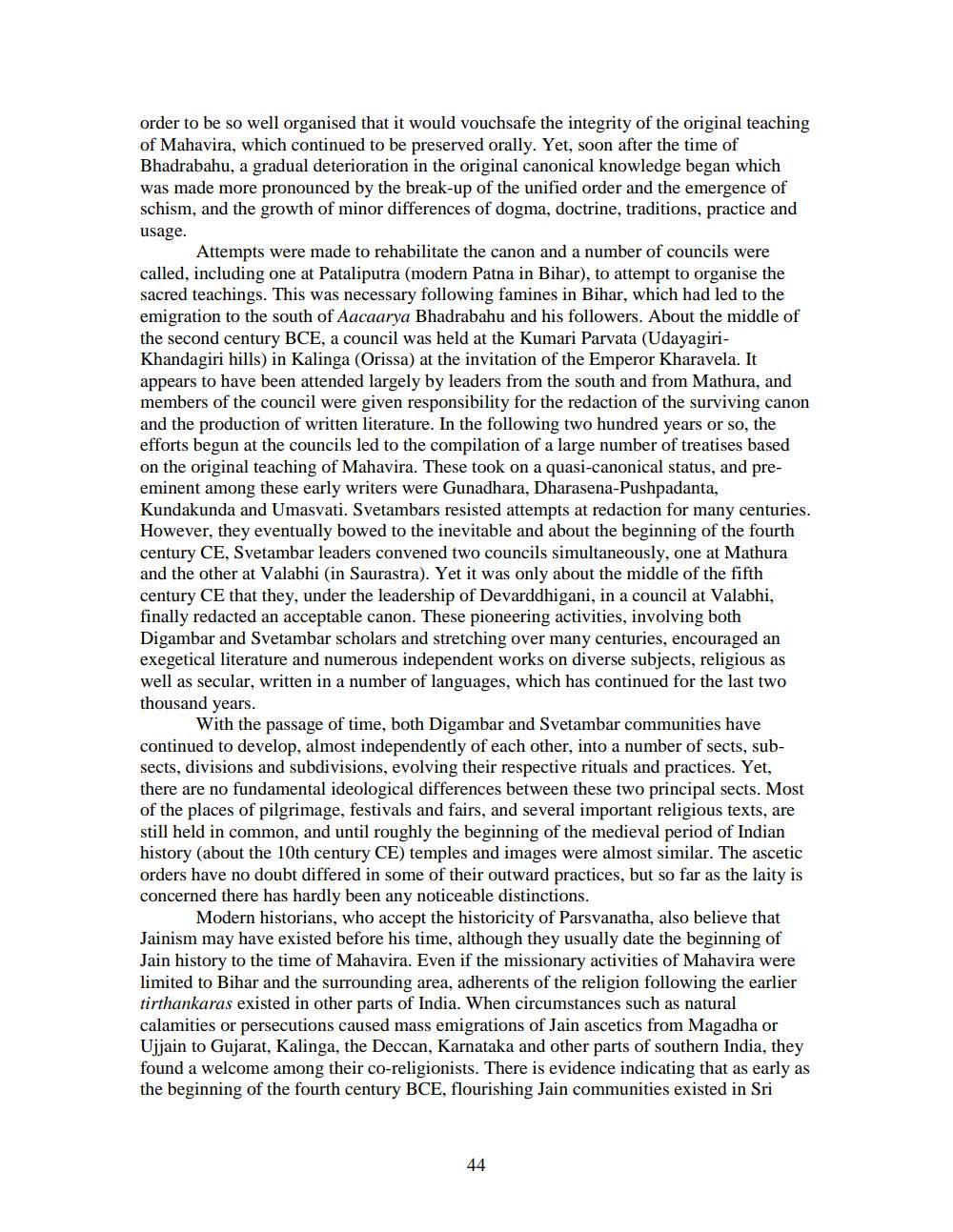________________
order to be so well organised that it would vouchsafe the integrity of the original teaching of Mahavira, which continued to be preserved orally. Yet, soon after the time of Bhadrabahu, a gradual deterioration in the original canonical knowledge began which was made more pronounced by the break-up of the unified order and the emergence of schism, and the growth of minor differences of dogma, doctrine, traditions, practice and usage.
Attempts were made to rehabilitate the canon and a number of councils were called, including one at Pataliputra (modern Patna in Bihar), to attempt to organise the sacred teachings. This was necessary following famines in Bihar, which had led to the emigration to the south of Aacaarya Bhadrabahu and his followers. About the middle of the second century BCE, a council was held at the Kumari Parvata (UdayagiriKhandagiri hills) in Kalinga (Orissa) at the invitation of the Emperor Kharavela. It appears to have been attended largely by leaders from the south and from Mathura, and members of the council were given responsibility for the redaction of the surviving canon and the production of written literature. In the following two hundred years or so, the efforts begun at the councils led to the compilation of a large number of treatises based on the original teaching of Mahavira. These took on a quasi-canonical status, and preeminent among these early writers were Gunadhara, Dharasena-Pushpadanta, Kundakunda and Umasvati. Svetambars resisted attempts at redaction for many centuries. However, they eventually bowed to the inevitable and about the beginning of the fourth century CE, Svetambar leaders convened two councils simultaneously, one at Mathura and the other at Valabhi (in Saurastra). Yet it was only about the middle of the fifth century CE that they, under the leadership of Devarddhigani, in a council at Valabhi, finally redacted an acceptable canon. These pioneering activities, involving both Digambar and Svetambar scholars and stretching over many centuries, encouraged an exegetical literature and numerous independent works on diverse subjects, religious as well as secular, written in a number of languages, which has continued for the last two thousand years.
With the passage of time, both Digambar and Svetambar communities have continued to develop, almost independently of each other, into a number of sects, subsects, divisions and subdivisions, evolving their respective rituals and practices. Yet, there are no fundamental ideological differences between these two principal sects. Most of the places of pilgrimage, festivals and fairs, and several important religious texts, are still held in common, and until roughly the beginning of the medieval period of Indian history about the 10th century CE) temples and images were almost similar. The ascetic orders have no doubt differed in some of their outward practices, but so far as the laity is concerned there has hardly been any noticeable distinctions.
Modern historians, who accept the historicity of Parsvanatha, also believe that Jainism may have existed before his time, although they usually date the beginning of Jain history to the time of Mahavira. Even if the missionary activities of Mahavira were limited to Bihar and the surrounding area, adherents of the religion following the earlier tirthankaras existed in other parts of India. When circumstances such as natural calamities or persecutions caused mass emigrations of Jain ascetics from Magadha or Ujjain to Gujarat, Kalinga, the Deccan, Karnataka and other parts of southern India, they found a welcome among their co-religionists. There is evidence indicating that as early as the beginning of the fourth century BCE, flourishing Jain communities existed in Sri
44




